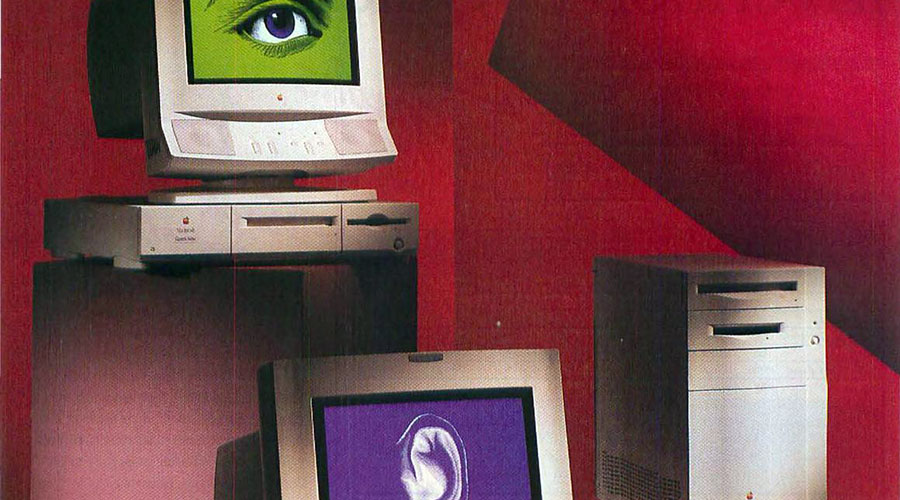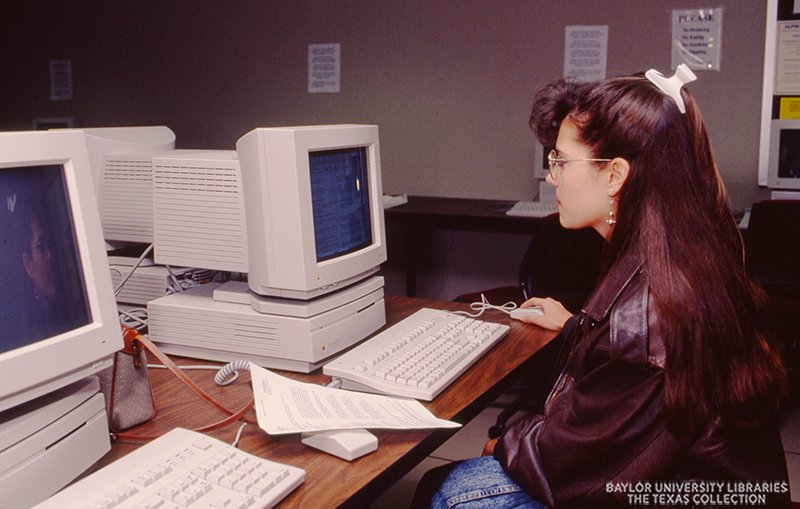
Time Capsule: Personal Computing, 1993 Style
The first thing one must know about computers of the 1990s were that they had two primary attributes — they were boxy and gray. Oh, and they were also super expensive. That doesn’t mean it’s not fun to revisit those heady, pre-internet days when only the luckiest (or the ones with a ton of disposable income) had their own PC. So let’s head back three decades and do just that, through the magic of preserved photos and vintage advertising.
I haven’t been in college for many years. Do they still have computer labs? I remember the thrill of sending my first non-America Online email with one in 19…well, that’s not important. Well even if they do, I’d be shocked to find any dot matrix printers there.
No, that’s not a camera at the bottom of this computer. That’s what us old folks remember as a track ball. It came in handy when navigating around the whopping screens on laptops of the day. According to this site, the Siemens Nixdorf PCD-4NL was positioned as a compact subnotebook. It was offered with a VGA color or grayscale display; the dimensions were 36 (with color display 39) × 269 × 199 mm with a weight of just over 2 kg. An external floppy disk drive was available as an accessory.
I don’t really have any commentary on this other than to say that I love a good modem infographic.
And now a word from the Tandy Sensation!
I certainly don’t want to forget about my European friends, so here’s a neat item from ’93. This is the Amstrad NC150 Notepad Computer. Amstrad was a British electronics company (1968-2010) and was a big player in the UK PC market during the late 1980s. The NC150 was an intermediate version of the NC100 and was only sold in Italy and France. Its main selling point was ease of use and simplicity, thus the “User Friendly” label at the top of the unit.
Before they were eclipsed by America Online, Prodigy was the biggest player in America’s online service provider space. And here’s a cool piece of trivia for you — the company was founded as a joint venture (Trintex) in 1984 by CBS, IBM, and… you guessed it, Sears, Roebuck and Company. Man, was there anything Sears wasn’t involved in back in the day?
Man, I can just hear that keyboard clicking in my head now.
Prodigy changed ownership hands in 1996, went public in 1999, and was essentially subsumed by SBC Communications — formerly Southwestern Bell — in 2001.
I certainly don’t want to leave my non-PC friends out of this roundup. So let’s take a moment to remember the ill-fated Apple Newton, which lasted not quite five years. Perhaps Newton’s most lasting legacy — other than being the butt of a great Simpsons joke — is introducing the term Personal Digital Assistant (PDA) into the popular lexicon. Alas, the Palm Pilot ate Newton’s lunch and relegated the latter to a technological footnote.
I’d be remiss if I didn’t mention what the internet was like for most people in 1993. In a word, rudimentary. What you’re looking at here is one of the first browsers of note, Mosaic. Version 1.0 of Mosaic was released in April 1993 and introduced such features as icons, bookmarks, and pictures. Fancy!
And speaking of the internet, let’s wrap this up by remembering the days when you had a choice to make — either you could use your home telephone or the internet, but not both. That’s because for most home computer users, the humble dial-up modem was their only way to access the web. A typical modem ran for anywhere from $200-500 in 1993 bucks, or from $400-1,000 in 2023 value. I can’t speak for you but I know those blazing fast speeds were worth every penny.








